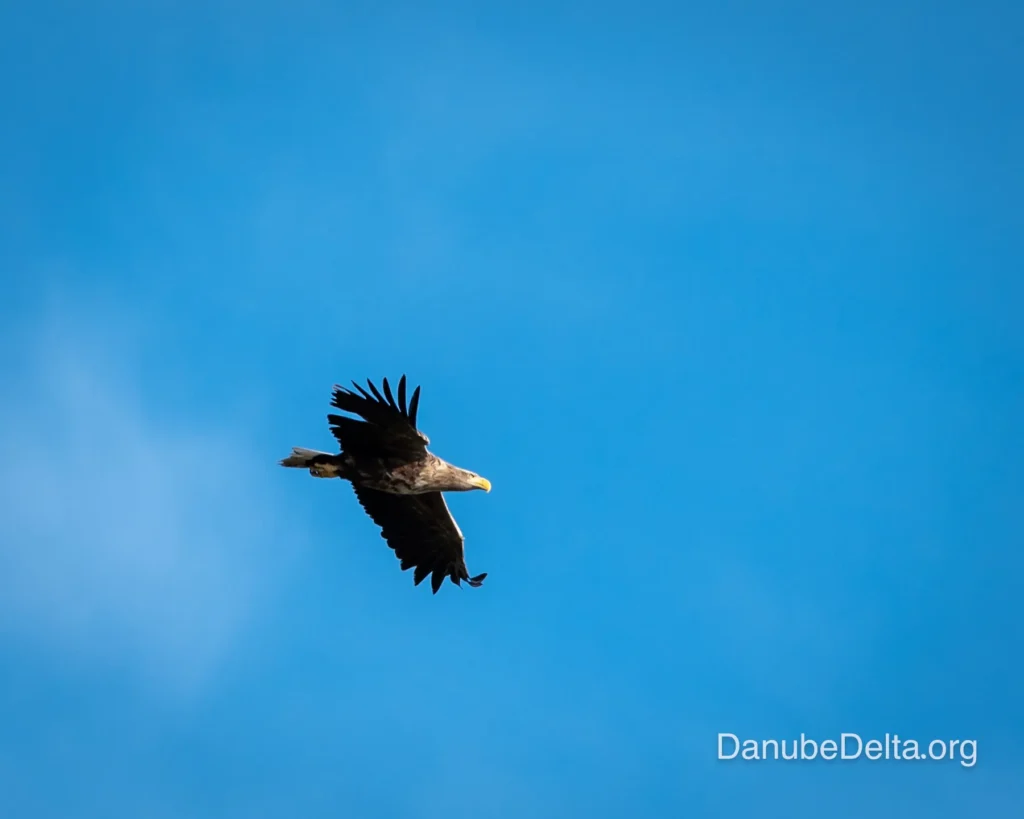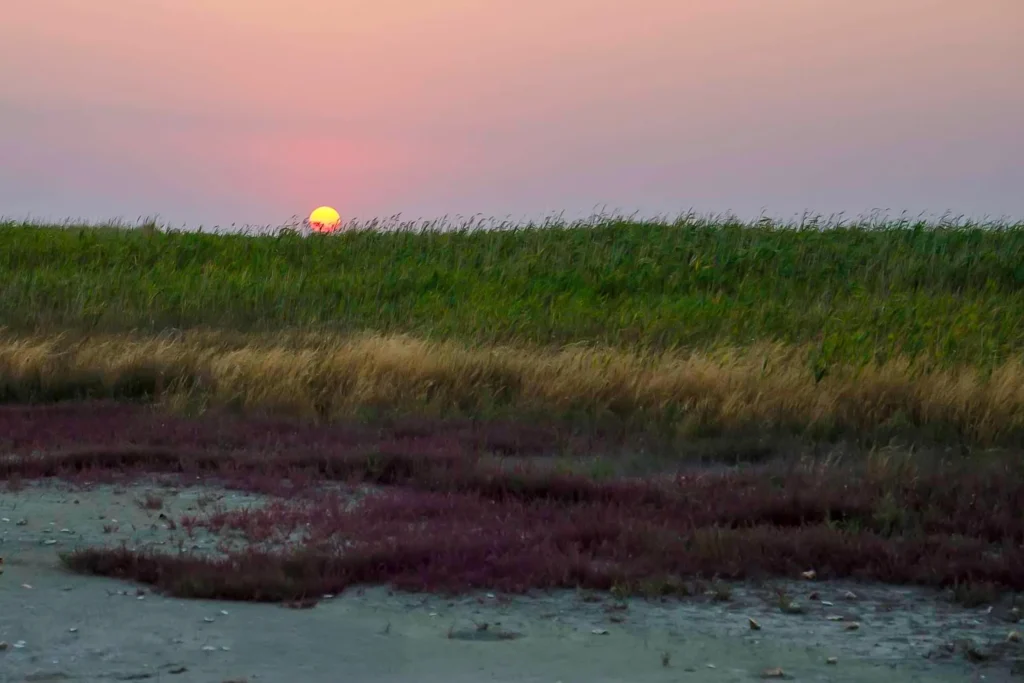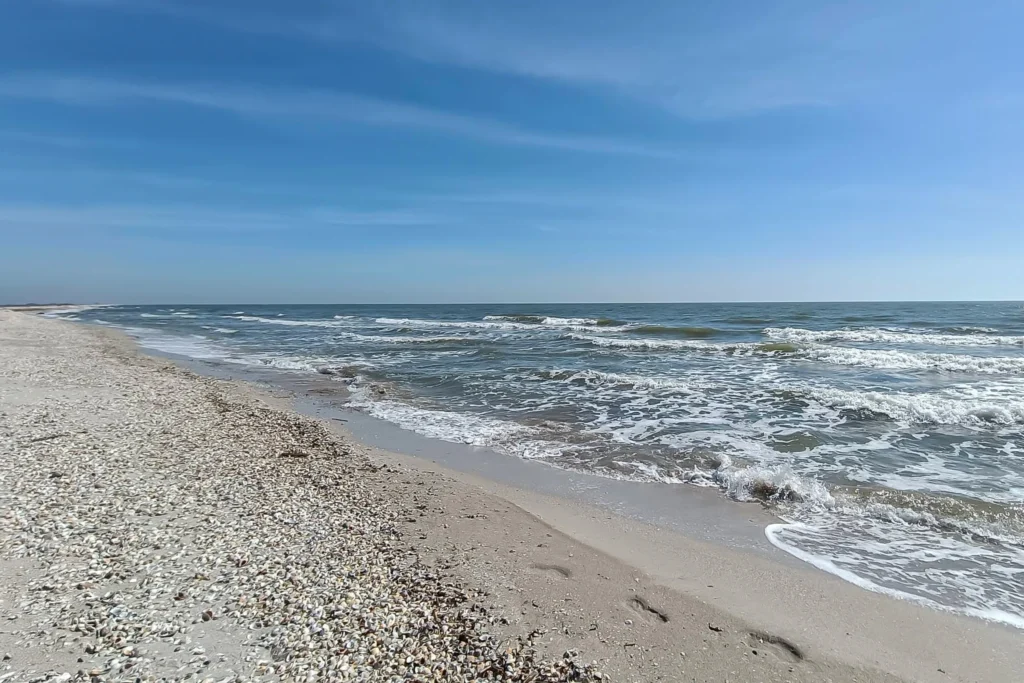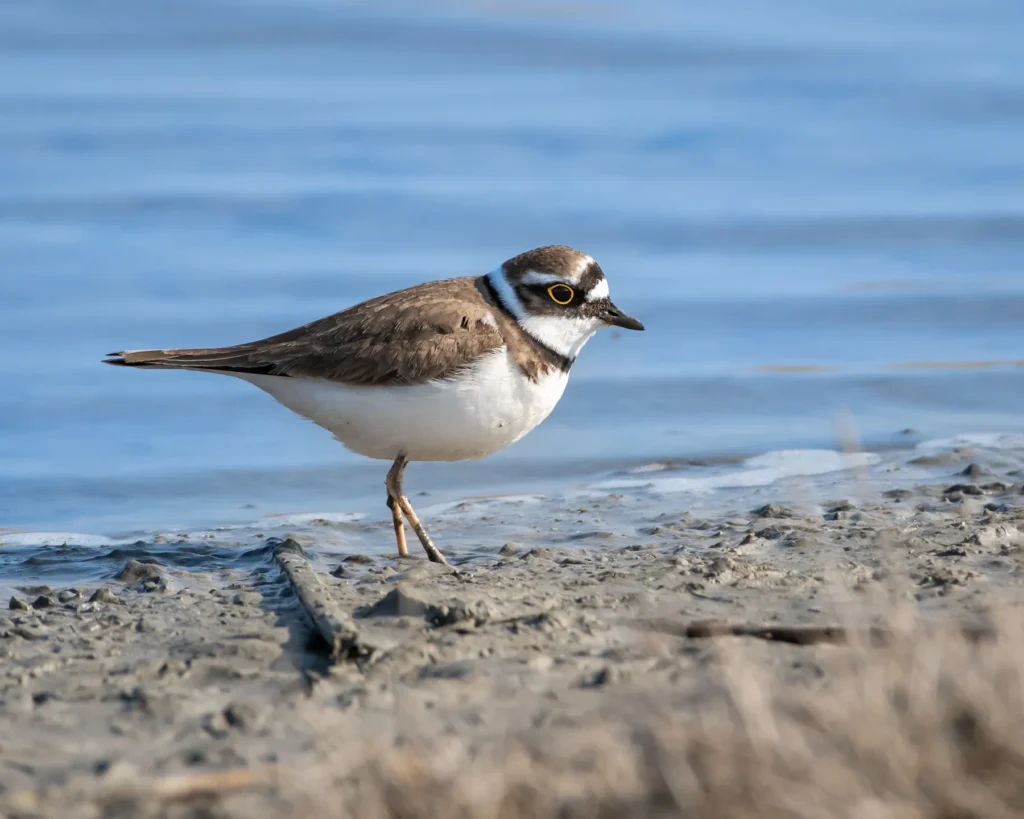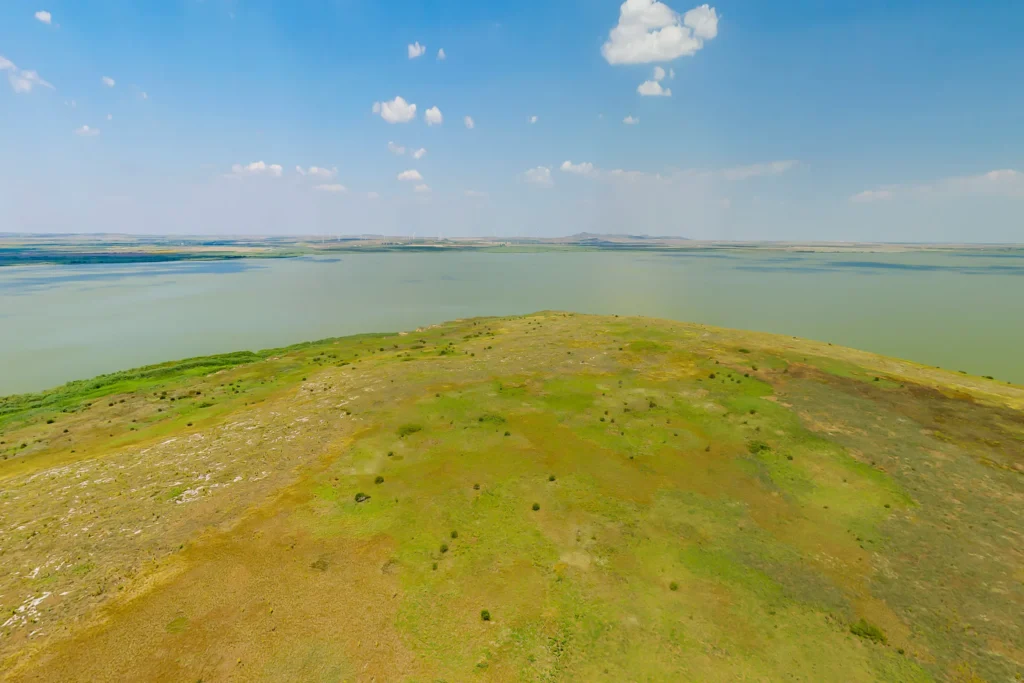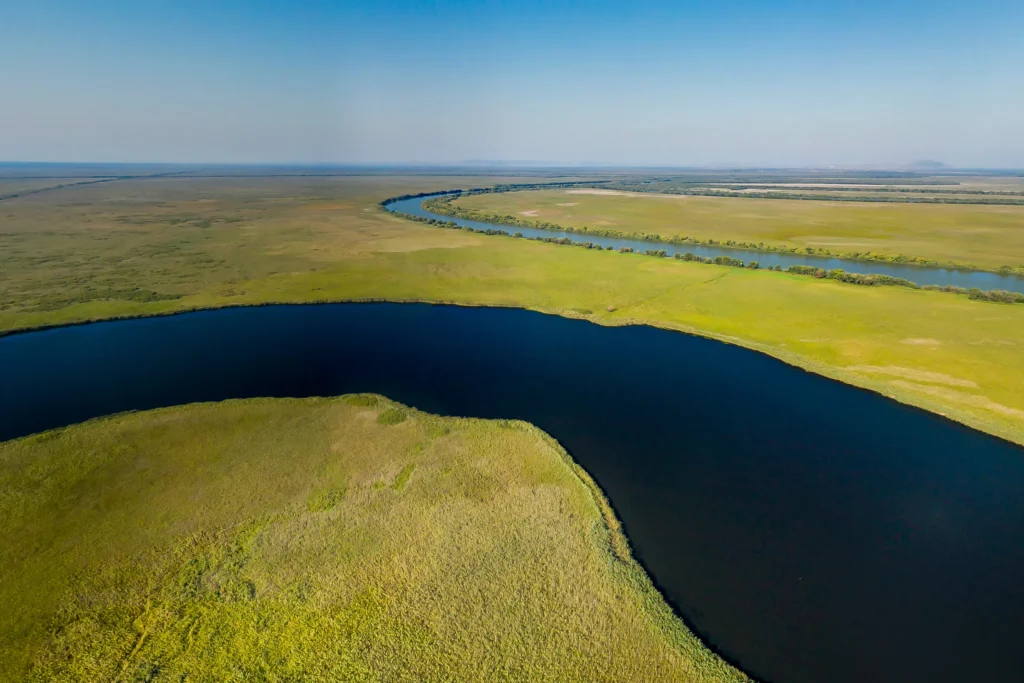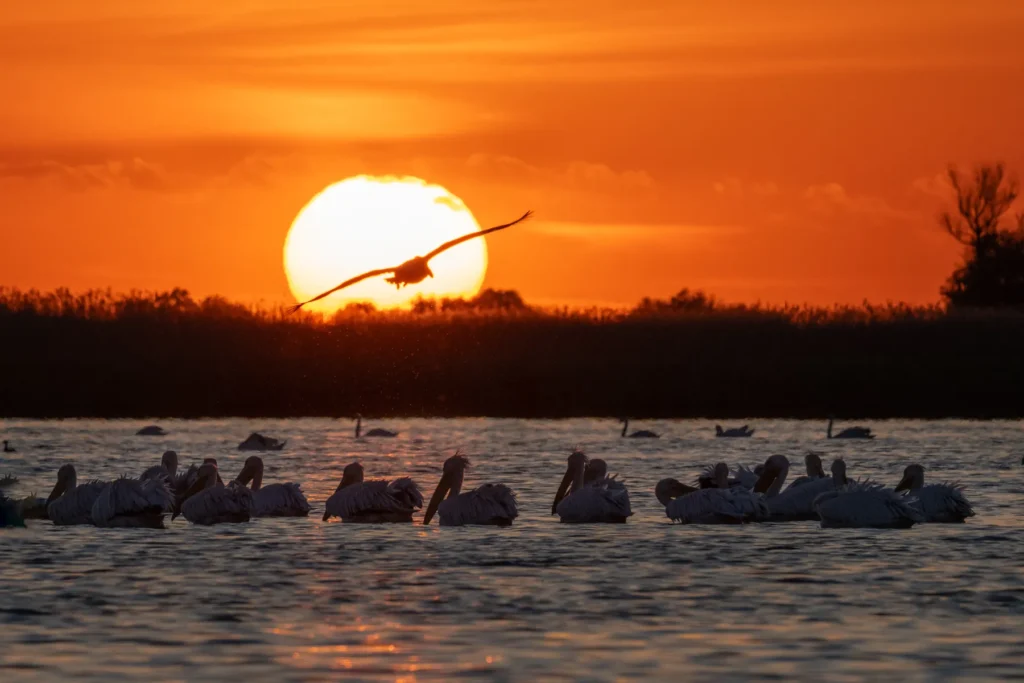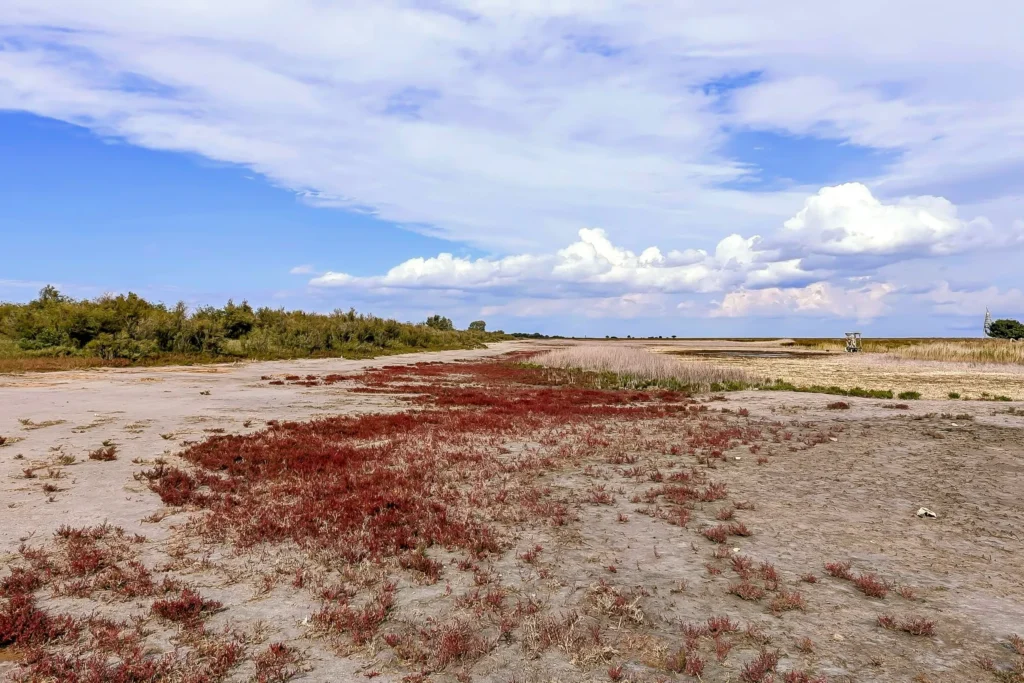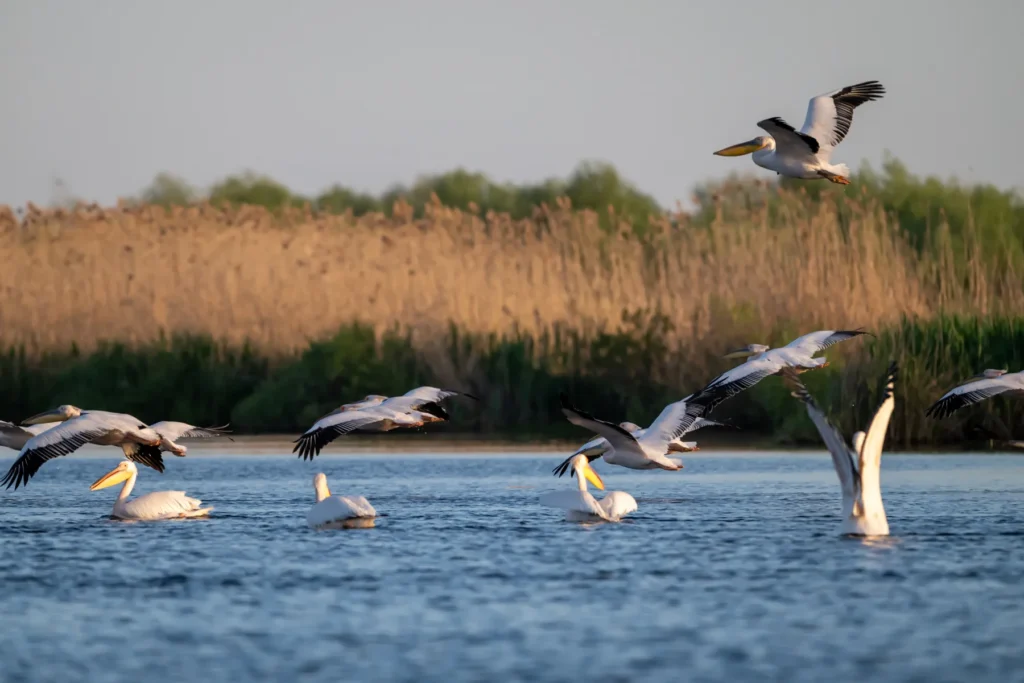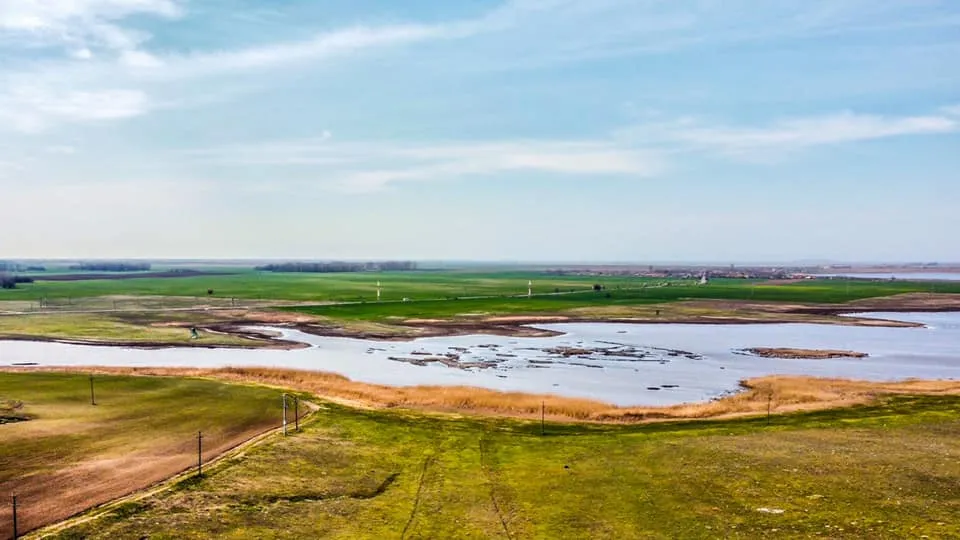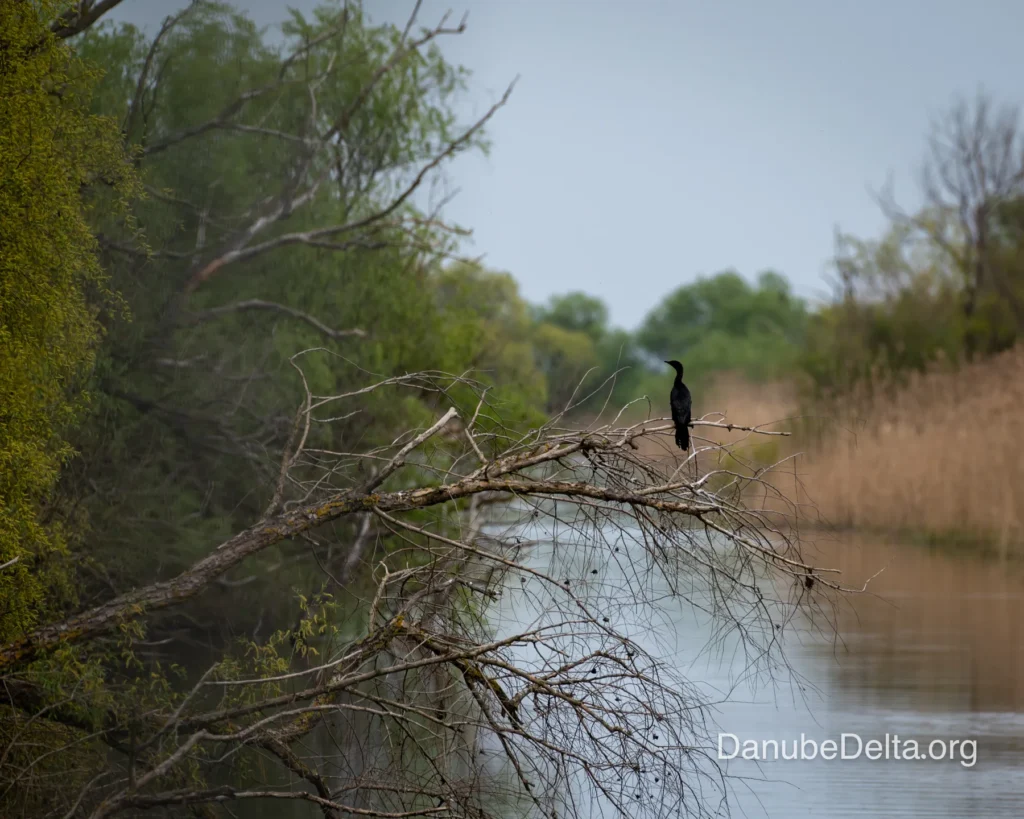Letea Forest, a strictly protected area in the Danube Delta
Letea Forest - Danube Delta
Letea Forest: A Unique and Vulnerable Subtropical Ecosystem in the Heart of the Danube Delta
Introduction: Letea Forest - A Frontier of Subtropical Biodiversity in Europe
Letea Forest, a flagship site of the Danube Delta Biosphere Reserve (DDBBR), is a natural monument of exceptional ecological value, recognised both nationally and internationally. Established in 1938, by Council of Ministers Decision No 645, the Letea Forest is considered the oldest nature reserve in Romania. Its status has since been consolidated, being included in the Danube Delta National Park and recognised by UNESCO as a World Heritage Site. What makes this area truly unique is its character as "the northernmost subtropical forest in Europe," a title justified by the unexpected combination of sand dunes and lush vegetation, a bizarre and fascinating landscape at once.
This report aims to explore in depth its geographical particularities, its rich biodiversity, the conservation efforts undertaken, as well as the major challenges and threats facing this fragile ecosystem. The analysis will go beyond a simple description, placing the Letea Forest in a comparative context with other similar areas in the Delta, in particular the Caraorman Forest, in order to highlight both the similarities and the differences that define the uniqueness of each site. By examining these aspects in detail, a more nuanced understanding of the ecological dynamics of the region and the need for responsible management to protect this natural heritage is sought.
Geographical Background and Legal Framework
Geology and Genesis of the Letea Grindstone
The Letea Forest is located on a sandstone of the same name, a formation of fluvio-maritime origin, situated between the arms of the Danube Chilia to the north and Sulina to the south. Together with the Caraorman sandstones, these sandstones are thought to have formed a natural barrier separating the Bay of Tulcea from the Black Sea, before the alluvium from the river formed the Delta in its present form. The formation of the Letea Sandstone was a complex process, which was contributed to by alluvium transported by the Sfântu Gheorghe Arm and picked up by marine currents, depositing it in the littoral zone. The Letea Grind covers a total area of 9,225 ha and is composed of a multitude of subgrains, reaching a length of 20 kilometres and a width of 15 kilometres in the southern part.
A distinctive feature of the landscape are the sand dunes, which reach heights of up to 12.4 metres and alternate with wet depressions, known to locals as "hașmacuri." These are bands of arboreal vegetation that have developed in the lower, wetter areas between the dunes, an ideal setting for the lush growth of specific flora. Letea Forest, itself, is found in the largest of these hașmacs, called "Hașmacu Mare."
Legal Status and Delimitation
Letea Forest was placed under legal protection by Council of Ministers Decision No 645 of 1938, making it the oldest nature reserve in Romania. The legislative action was motivated by the scientific value of the area and its unique character. Subsequently, the protected status was reinforced and reconfirmed by modern legislation. By Law No 5 of 6 March 2000, the Letea Forest was declared a protected area of national interest, classified in category Ia IUCN (strict mixed nature reserve). This legislation approved the National Spatial Development Plan - Section III - Protected Areas, precisely defining the boundaries and the full protection regime.
The official area of the Letea Forest, according to the law, is 2,825 hectares. However, there are also sources that mention an area of about 3,200 hectares. This difference can be attributed either to adjustments over time in the administrative boundaries or to approximations in the popularisation content, as opposed to the accuracy of the legal data. However, it is important to note that regardless of the exact size, the area is large enough to support a complex ecosystem that functions as a 'study laboratory' for researchers.
Human activities are extremely limited within the fully protected areas, with only scientific, research and monitoring activities allowed.
Letea Biodiversity: A Symbiosis Between Steppe and Subtropical
An Exotic and Endemic Flower
The uniqueness of the Letea Forest derives to a large extent from its flora, which combines steppe, subtropical and Mediterranean elements. The tree composition includes meadow oaks (Quercus robur) and mist oaks (Quercus pedunculiflora), which can be secular specimens with massive trunks. These include white and black poplars, meadow ash, elms, white lime trees and, less commonly, black alders. A fascinating landscape feature is the unusual way in which the trees have developed, with gnarled, contorted trunks leaning towards the water.
The most spectacular and defining element of the forest's subtropical character is the presence of the Greek vine (Periploca graecaIt is a climbing plant of Mediterranean origin, unique in Europe in this context and reaching its most northerly limit of distribution in the Letea Forest. The lianas can grow up to 25 metres in length, wrapping themselves around the trunks of the trees and creating a 'mini-juniper' landscape. As well as lianas, the forest is also home to other climbing plants, such as the wild vine (Vitis silvestris), ivy (Hedera helix), hops (Humulus lupulus) and the woodland turpen (Clematis vitalbaThe ground cover includes rare species such as sand volvulus and sand barberry, as well as endemic plants such as Centaurea pontica.
A Diverse and Threatened Fauna
The Letea Forest's fauna is equally remarkable, adapted to steppe and subtropical forest conditions. It is estimated that over 3,000 animal species live here, of which more than 2,000 are insects. Herpetological diversity is particularly high, with rarities such as the sand lizard (Eremias arguta) and steppe adder (Vipera renardi or Vipera ursinii). The steppe viper is a species endemic to Asia and Eastern Europe, classified as vulnerable by the International Union for Conservation of Nature (IUCN), emphasising the global importance of the Letea Forest as a critical habitat for an endangered species.
The forest is a vital refuge for many bird species, especially raptors. Bald Eagle (Haliaeetus albicilla), one of the largest birds of prey in the Delta, nests in the ancient trees of the forest. Species such as the falcon, the kestrel, the skylark and the grouse can also be spotted here. The forest is also a habitat for mammals such as otters, otter dogs, foxes and wild boar.
Wild horses are a particular attraction, but also a source of tension. It is estimated that between 2,000 and 4,000 horses live free-roaming in the Delta, with most of the herds centred on the Letea sandstone. Their origins are linked to the domestic horses abandoned during the communist period, which were wild and adapted to steppe conditions. These horses are a symbol of the wilderness, but administrators consider them a serious threat to the ecosystem due to overgrazing, which destroys the bark of young trees and degrades the vegetation. This conflict between the horses' tourism value and their ecological impact is a major management challenge.
Conservation Efforts and Management Challenges
Conservation Projects and Active Measures
To counter the threats to the Letea Forest, the Administration of the Danube Delta Biosphere Reserve (ARBDD) has implemented various conservation projects. One notable example is the project "Conservation of Letea Forest," carried out between 2013 and 2014, in partnership with the Danubiu Association. The main objective of this project, totalling over 8 million lei, was to improve the state of biodiversity conservation through concrete measures. One of the specific objectives was the creation of protective infrastructure, including fences and fish ponds, to minimise the impact of overfishing. This action emphasises a proactive approach of the ARBDD in managing the conflict between wildlife and the fragile ecosystem.
In addition to the projects, legal regulations, such as Law 5/2000 and HG 248/1994, clearly define the integral protection regime and the prohibition of economic activities inside the reserve, except for research and surveillance.
Critical Threats to the Ecosystem
The Letea Forest ecosystem faces a number of complex threats, both natural and man-made.
- Overgrazing wild horses: Horses, in the absence of other food sources, feed on tree shoots and bark, causing considerable damage and habitat degradation. Although their presence is a tourist attraction, their ecological impact is considered dangerous by managers. Management solutions include relocation and controlled grazing instead of more drastic measures.
- Unprofessional tourism: In addition to overcrowding, uncontrolled tourism and lack of visitor education are a major threat. The dunes are being damaged by passing ATVs and the lianas, emblems of the forest, are being uprooted by tourists. This behaviour contributes to the degradation of the landscape and the disturbance of the flora.
- Vegetation fires: Reed and dry vegetation fires are a general danger in the Delta. A recent fire in the Caraorman Forest, caused by a car exhausts, demonstrates the vulnerability of these forests to human-caused incidents. Such events can quickly destroy significant parts of the ecosystem.
- Illegal deforestation: Although not directly mentioned for Letea Forest, there are reports of illegal deforestation in other protected areas in Romania. These show a systemic problem that Letea may also be affected by.
- Institutional challenges: The existence of a dual administration of the forest (ARBDD and Regia Națională a Pădurilor Romsilva) may hinder the implementation of management plans and conservation decisions, as mentioned for other similar reserves.
Letea vs Caraorman Forest: A Comparative Analysis
A deeper understanding of the Letea Forest is gained by comparing it with the Caraorman Forest, another unique forest ecosystem developed on a fluvio-maritime sandstone in the Danube Delta.
| Feature | Letea Forest | Caraorman Forest |
| Surface | 2 825 ha | 2 250 ha |
| Localisation | Grindul Letea, between the Chilia and Sulina arms | The Caraorman Grind, between the Sulina and Sfântu Gheorghe inlets |
| Geological origin | Fluvio-maritime grind with sand dunes | Grind of marine origin with sand dunes |
| Specific flora | The presence of the Greek creeper (Periploca graeca), which reaches the northern limit of its range in Europe | The presence of the Greek creeper (Periploca graecaOther sources say the liana is missing here |
| Notable fauna | Bald eagle, steppe adder, wild horses | Bald Eagle, Raven, Black Woodpecker, Kneeling Oak |
| Main threats | Wild horse overgrazing, unprofessional tourism, fires | Fires (e.g. a fire caused by a car drum), overgrazing horses |
| Conservation efforts | Overfill protection projects | Conservation project with fences, public toilets and PSI pickets |
Both forests have a similar geological origin, having been formed on sandy sandstones. Both are important habitats for bird and mammal species, including the red-tailed eagle, otter, jackal and wild rabbit. Also a common management challenge is wild horse populations which, through overgrazing, put pressure on local ecosystems.
One notable difference concerns the presence of the Greek creeper (Periploca graecaSeveral sources present it as a defining feature of the Letea Forest, where it reaches its northern limit of distribution in Europe. There is some vagueness about the Caraorman Forest: one source mentions liana as being present here as well, while another states that its absence is a major difference from Letea. This contradiction may indicate a changing ecological dynamic or a confusion of data, a point worth investigating. Another point of difference is the presence of the Kneeling Oak, a 400 year old specimen over 4 metres in circumference, which is considered the largest oak in the Delta and a specific attraction of the Caraorman Forest.
This comparative analysis helps to better understand how similar ecosystems adapt and differentiate, even in geographically similar areas, and emphasises the importance of treating each reserve as a unique site with its own specific challenges and characteristics.
Responsible Visitor Guide
Official Access Rules and Permits
To visit the Letea Forest and other areas of the Danube Delta Biosphere Reserve (DDBBR), tourists need access permits issued by the Reserve Administration. These permits are mandatory and can be obtained in several ways, including online, by SMS or from information centres and SelfPay machines.
There are certain categories of people who get free travel, including schoolchildren, students, pensioners, war veterans and local residents.
Recommended Ways to Explore
Visiting the Letea Forest is carried out under strict protection rules. An official terrestrial route, marked by the ARBDD, is "Route D1: Letea (Sfiștofca) - Nebunu Lake - Letea". To get inside the forest, tourists can use traditional carts from the village of Letea or explore on foot. Access can be made from Tulcea, on navigable routes including canals and lakes, with stops in villages such as Crișan or Caraorman, from where you can set off towards Letea. Responsible tourism involves the use of slow boats and respect for tranquillity, an approach supported by the ARBDD through dedicated regulations.
Code of Conduct
A strict code of conduct is essential to minimise the impact on the fragile ecosystem. Rules include:
- A ban on plant harvesting, animal trapping and tree felling.
- Ban camping and burning in unauthorised areas.
- Obligation not to leave rubbish in the reserve.
- Avoid loud noises and sudden movements to avoid disturbing wildlife.
These rules are crucial to protect biodiversity and to ensure that Letea Forest, along with the other reserves in the Delta, remains a natural sanctuary for future generations.
Conclusions and Strategic Recommendations
The Letea Forest is more than just a forest; it is a relict ecosystem, a mosaic of steppe and subtropical elements, of inestimable ecological and scientific value. Its status as Romania's oldest nature reserve and part of UNESCO's World Heritage attests to its global importance. However, its long-term survival is far from guaranteed and is threatened by a number of interconnected factors. Threats such as overgrazing by wild horses, uncontrolled tourism and the risk of wildfires point to increased vulnerability to anthropogenic pressures.
Effective management of Letea Forest requires an integrated approach, balancing tourism promotion with strict conservation needs. Conservation projects, such as those implemented by the ARBDD, demonstrate an awareness of the problems, but legislative updates, such as Decision 317/2025 on car access, suggest a continued adaptation to new challenges.
To protect this natural sanctuary, we recommend the following:
- Educating the public: A more intensive information campaign about the rules of behaviour and the impact of human actions on the ecosystem.
- Continuous monitoring: Increase efforts to monitor critical species (e.g., steppe adder, red-tailed hawk) and wild horse impacts in order to make science-based management decisions.
- Slow tourism development: Promote low-impact activities such as non-motorised boating and guided birdwatching to reduce pressure on vulnerable areas.
Protecting the Letea Forest, together with other reserves such as Caraorman Forest, Sacalin-Zătoane Complex, Lake Nebunu, Arinișul Erenciuc or Sărăturile Murighiol, is not only a responsibility of the authorities, but a joint effort involving every visitor and local community. By understanding and respecting its fragility, the Letea Forest will continue to be a miraculous "mini-jungle" and a symbol of European wilderness.
Events in the Danube Delta
Accommodation to suit all tastes:
Whether you prefer the cosiness of modern villas, the rustic atmosphere of traditional guesthouses or the adventure of camping, they offer a variety of accommodation options to suit your needs and budget.
